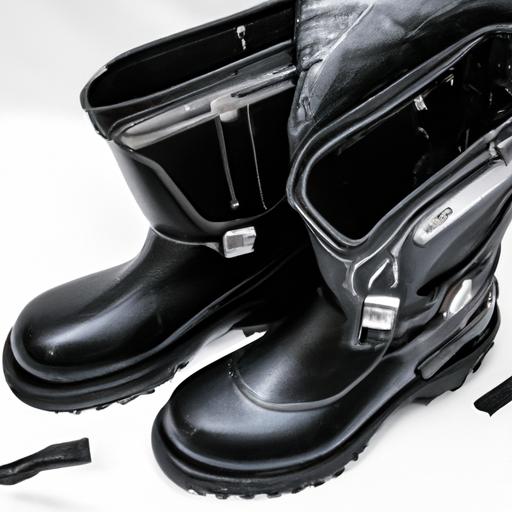Stick vs MIG vs TIG Welding: Choosing the Right Technique for Your Projects
When it comes to joining metal parts together, welding is the go-to method for its strength and durability. However, with various welding techniques available, it can be overwhelming to determine which one suits your needs best. In this article, we will dive into the world of stick, MIG, and TIG welding, exploring their differences, advantages, and best applications. By the end, you’ll be equipped with the knowledge to make an informed decision for your welding projects.
Introduction
Welding is a versatile art that allows us to create strong and permanent bonds between metal components. Among the most commonly used welding techniques are stick, MIG, and TIG welding. Each of these methods carries its unique characteristics, making them suitable for various applications.
Stick Welding is often hailed as the most traditional welding technique. Also known as shielded metal arc welding (SMAW), it utilizes a consumable electrode covered in fluThe electrode melts, creating a protective shield and forming the weld joint. Stick welding is renowned for its versatility and ability to work in challenging environments, such as outdoor or high-moisture areas. With its simplicity and affordability, stick welding is a popular choice for DIY enthusiasts and professionals alike.
MIG Welding, or gas metal arc welding (GMAW), employs a continuously fed wire electrode and a shielding gas to protect the weld zone. This method offers high efficiency and productivity, thanks to its semi-automatic process. MIG welding is known for its speed and ease of use, making it ideal for large-scale projects and repetitive tasks. Additionally, MIG welding provides excellent control over the weld pool, resulting in clean and aesthetically pleasing welds.
TIG Welding, or gas tungsten arc welding (GTAW), utilizes a non-consumable tungsten electrode to create the weld joint. Argon gas is commonly used as a shielding gas to prevent contamination. TIG welding stands out for its precision and versatility, allowing for the welding of various metals and thicknesses. This method offers exceptional control over heat input, making it ideal for intricate and critical welds in industries like aerospace and automotive.
Choosing the right welding method is crucial to achieve the desired results in terms of strength, appearance, and efficiency. Stick, MIG, and TIG welding each have their strengths and weaknesses, making them suitable for different applications. In the following sections, we will explore each technique in detail, highlighting their advantages, disadvantages, and ideal applications. Whether you’re a professional welder or a DIY enthusiast, understanding these differences will empower you to make the best choice for your welding projects. So, let’s dive in and discover the wonders of stick, MIG, and TIG welding!
Stick Welding
Explanation of Stick Welding Process and Its Characteristics
Stick welding, also known as shielded metal arc welding (SMAW), is a welding technique that utilizes a consumable electrode covered in fluThe flux coating serves multiple purposes, including creating a protective gas shield around the molten metal, removing impurities, and stabilizing the arc.
When using stick welding, the electrode is held in one hand while the other hand operates the welding machine. The electrode is gradually consumed as the welder progresses, requiring occasional pauses to replace the electrode.
Stick welding is known for its versatility and ability to work in challenging environments. It is particularly suitable for outdoor or high-moisture areas where other welding methods may struggle. The flux coating on the electrode provides additional protection against atmospheric contaminants, making it less sensitive to wind or draft.
Advantages and Disadvantages of Stick Welding
Stick welding offers several advantages that make it a popular choice for both professionals and hobbyists. Firstly, it is a relatively simple and straightforward welding technique, making it accessible to beginners. The equipment required for stick welding is also more affordable compared to other methods, which is an attractive factor for those on a tighter budget.
Additionally, stick welding can be performed on a wide range of metals, including carbon steel, stainless steel, and cast iron. This versatility allows for greater flexibility in various welding applications.
However, stick welding does have some limitations. One of the main drawbacks is its slower welding speed compared to other methods like MIG or TIG welding. The need to pause and replace the electrode can lead to interruptions in the welding process, reducing overall efficiency.
Furthermore, stick welding may produce more spatter and slag compared to other methods, requiring additional cleanup and post-welding work. The resulting welds may also have a rougher appearance and may not be as aesthetically pleasing as those achieved with other techniques.
Best Applications for Stick Welding
Stick welding is particularly well-suited for applications that require versatility, durability, and convenience. It excels in outdoor and remote environments, making it a popular choice for construction sites, pipelines, and maintenance work. Additionally, stick welding is often used in heavy fabrication, structural steel, and repair work.
Comparison of Stick Welding to MIG and TIG Welding
When comparing stick welding to MIG and TIG welding, it’s important to consider the specific advantages and limitations of each method. Stick welding offers the advantage of being more portable and versatile, making it suitable for challenging environments. However, it falls short in terms of speed and aesthetics when compared to MIG and TIG welding. MIG welding offers higher productivity and cleaner welds, while TIG welding provides exceptional precision and control. The choice between these welding methods ultimately depends on the specific requirements of your project.
MIG Welding: Mastering Efficiency and Versatility
Explanation of MIG Welding Process and Its Characteristics
MIG welding, or gas metal arc welding (GMAW), is a popular technique known for its efficiency and versatility. In MIG welding, a continuous wire electrode is fed through a welding gun, while a shielding gas, usually a mixture of argon and carbon dioxide, protects the weld pool from atmospheric contamination. The wire electrode melts and fuses the base metals together, forming a strong and durable weld joint. MIG welding can be performed with or without filler material, depending on the specific application.
The MIG welding process offers several notable characteristics. First, it is a semi-automatic method, meaning that the welder controls the welding gun’s movement while the wire feed is automated. This allows for faster and more efficient welding, making MIG welding highly suitable for projects that require high productivity. Additionally, the continuous wire feed ensures a consistent weld bead, resulting in clean and uniform welds.
Advantages and Disadvantages of MIG Welding
MIG welding comes with a range of advantages that make it a popular choice in various industries. One significant advantage is its high welding speed, allowing for the completion of large-scale projects in a relatively short timeframe. The ease of use is another benefit, making MIG welding accessible to both professionals and beginners. The automated wire feed and shielding gas provide better control over the welding process, resulting in fewer defects and higher-quality welds.
However, MIG welding does have some limitations. One of the main disadvantages is its sensitivity to environmental factors such as wind or drafts. The shielding gas can be easily disrupted, leading to poor weld quality. Additionally, MIG welding may not be suitable for welding thicker materials, as it tends to struggle with deep penetration. Finally, the equipment required for MIG welding can be more expensive compared to other welding techniques.
Best Applications for MIG Welding
MIG welding finds its application in a wide range of industries and projects. Its versatility allows it to weld various metals, including carbon steel, stainless steel, aluminum, and copper alloys. MIG welding is often utilized in automotive manufacturing, fabrication shops, and construction projects. It is particularly useful for projects that require fast and efficient welding, such as the assembly of metal structures, vehicle repairs, and manufacturing processes.
Comparison of MIG Welding to Stick and TIG Welding
When comparing MIG welding to stick and TIG welding, several factors come into play. In terms of speed and efficiency, MIG welding takes the lead due to its semi-automatic nature and continuous wire feed. Stick welding, on the other hand, requires manual electrode changes and can be slower. TIG welding, though highly precise, is generally slower than MIG welding due to its intricate nature.
MIG welding also offers better control over the weld pool compared to stick welding, resulting in cleaner and more aesthetically pleasing welds. However, TIG welding still reigns supreme in terms of precision and weld quality, making it the preferred choice for critical applications that require utmost accuracy.
In summary, MIG welding is an efficient and versatile welding technique suitable for a wide range of applications. Its high welding speed and ease of use make it a popular choice for professionals and beginners alike. However, it is important to consider the environmental factors and material thickness when deciding on the appropriate welding method. Stay tuned as we explore TIG welding, another remarkable welding technique in the next section!
Comparison of Stick, MIG, and TIG Welding
Welding methods such as stick, MIG, and TIG each have their unique strengths and weaknesses. Understanding the differences between these techniques is vital when selecting the most suitable method for your specific welding project. Let’s dive into a detailed comparison to help you make an informed decision.
Detailed Comparison of the Three Welding Methods
Stick Welding: Stick welding is known for its versatility and ruggedness. It excels in challenging conditions, making it ideal for outdoor projects or worksites with limited accessibility. Although it may require more skill and practice to achieve precise welds, stick welding offers excellent penetration and can be used on a wide range of materials, including carbon steel, stainless steel, and cast iron.
MIG Welding: MIG welding is celebrated for its speed, ease of use, and high productivity. It is a semi-automatic process that delivers clean and aesthetically pleasing welds. MIG welding is commonly used in industries like automotive, fabrication, and construction due to its versatility and ability to weld various metals, including aluminum, stainless steel, and mild steel.
TIG Welding: TIG welding is renowned for its precision and versatility. It is the go-to method for critical applications that demand superior weld quality. TIG welding allows for precise control over heat input, resulting in clean and flawless welds. It is commonly used in industries like aerospace, automotive, and artistry, where aesthetics and strength are paramount.
Factors to Consider When Choosing Between Stick, MIG, and TIG Welding
When deciding on the appropriate welding method, several factors should be taken into account:
-
Skill Level Required: Stick welding typically requires more skill and practice to master, while MIG welding is relatively easier to learn. TIG welding demands the highest level of expertise due to its precision and control requirements.
-
Cost: Stick welding is often the most affordable option, as it requires minimal equipment and consumables. MIG welding, on the other hand, involves the cost of shielding gas and wire electrodes. TIG welding tends to be the most expensive due to the need for a TIG torch, inert gas, and tungsten electrodes.
-
Weld Quality: TIG welding produces the highest-quality welds, with clean, precise, and aesthetically pleasing results. MIG welding also delivers visually appealing welds, while stick welding may produce rougher and less refined welds.
Suitability for Various Materials and Welding Positions
Each welding method has its preferred materials and welding positions:
- Stick welding is suitable for a wide range of materials and welding positions, making it versatile for diverse projects.
- MIG welding is commonly used for welding thin materials and in flat, horizontal, and overhead positions.
- TIG welding is highly versatile, capable of welding various materials, including exotic alloys, and is ideal for intricate and critical welds in any position.
By considering these factors and understanding the capabilities of stick, MIG, and TIG welding, you can confidently choose the most appropriate technique for your specific welding needs. The key is to align the method’s characteristics with the requirements of your project, ensuring optimal results in terms of strength, aesthetics, and efficiency.



